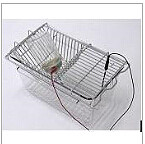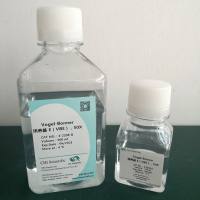A Vogel Conflict Test Using Food Reinforcement in Mice
互联网
788
Effects of compounds on suppressed or punished responding are often used to predict anxiolytic efficacy in humans. The use of mice in these tests has many advantages including the ability to evaluate transgenic animals. In contrast to steady state baselines that can take months to establish, the present method can deliver dose-response data within a week. Mice are food-deprived and placed in an experimental chamber with two nose poke holes. Every nose poke (FR1) produces a 20 mg food pellet. After 2 days of training, a drug or drug vehicle is administered and the mice are exposed to a mixed FR1 (food), FR1 (food + shock) schedule in alternating, unsignalled periods of 4 and 10 min for three cycles. In the 10-min period, nose pokes produce both food plus brief electrification of the grid floor (0.5 mA for 100 ms); during the 4-min period, only food is delivered with each nose poke. Under these conditions, the introduction of shock can substantially decrease nose pokes during the 10-min punishment period without significantly affecting responding during the nonpunishment periods. Results are shown that document the comparability of the drug effects in this procedure to that of other punishment procedures requiring protracted training. This was exemplified with the increases in suppressed responding by the anxiolytic chlordiazepoxide, but not by either d -amphetamine or morphine.









